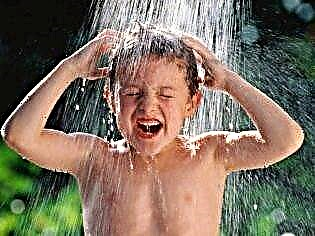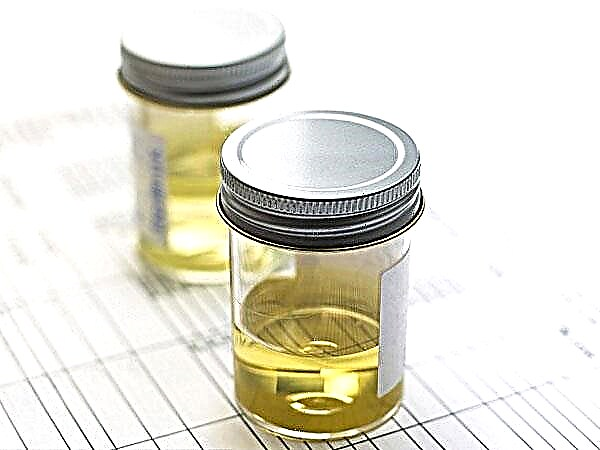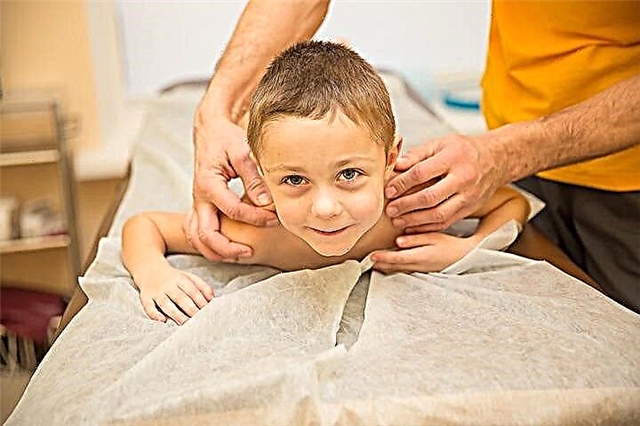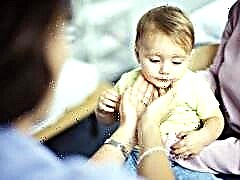
Mumps belongs to the category of childhood illnesses in which the child definitely needs help. And the point is not that the disease itself is dangerous. The greatest threat is posed by its complications. How and why mumps develops and what to do at the same time, we will tell in this material.
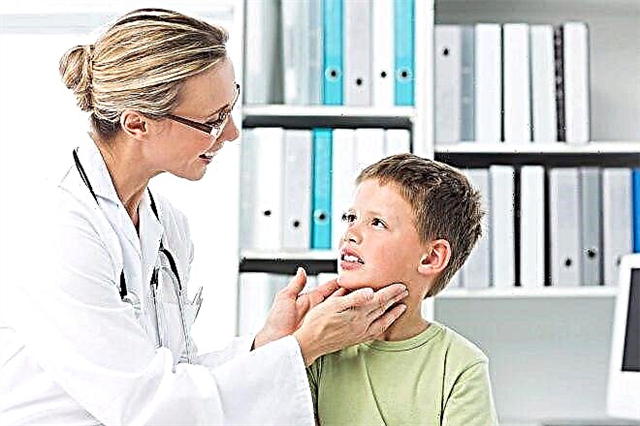
What it is
Mumps is popularly called simply - mumps. Even earlier, the ailment, which has been known since time immemorial, was called a moth. Both names fully reflect the clinical picture of what is happening. In this acute infectious disease, the salivary glands behind the ear are affected. As a result, the oval of the face is smoothed, it becomes round, like that of piglets.
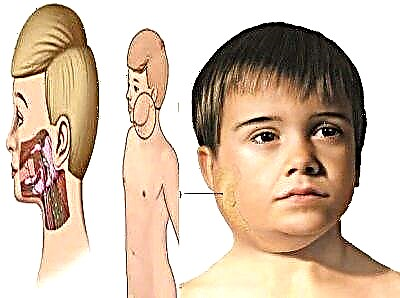
The disease is caused by a special type of virus, the inflammation is not purulent.
Sometimes it spreads not only to the area of the salivary glands behind the ears, but also to the sex glands, as well as to other organs that consist of glandular tissue, for example, the pancreas. The nervous system is also affected.
Newborns practically do not get sick with mumps, just as the disease does not occur in infants. Children from 3 years old are susceptible to infection. The maximum age of the risk group is 15 years. This does not mean that an adult cannot get mumps from a child. Maybe, but such a probability is small.
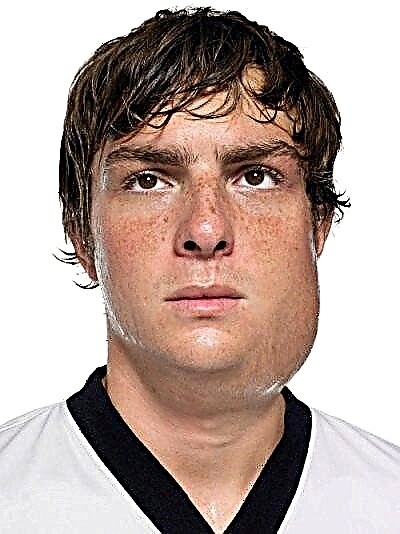
A few decades ago, and even now (by old memory), many mothers of boys are very afraid of this ailment, because mumps, if it affects the gonads of a child, can lead to infertility. Such an outcome was indeed quite common half a century ago. Now, in connection with universal vaccination, cases of mumps are reported less frequently, and the course of the disease itself became somewhat easier.
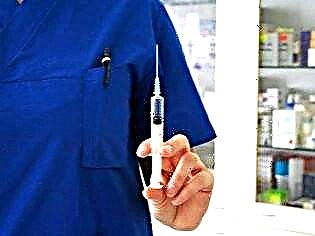
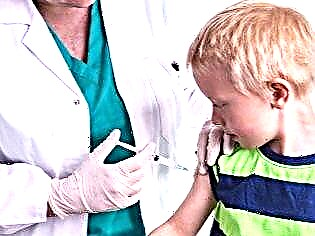
Boys do get sick with mumps several times more often than girls. Once transferred, the mumps develops lifelong immunity in the child. However, there are cases of re-infection, if for some reason persistent immunity has not been formed for the first time. Moreover, it is boys who also prevail among the “repeat offenders”.
Previously, the disease was called mumps. This name has survived in medical reference books today, but it cannot be considered absolutely reliable. This is again the merit of vaccination. Epidemics of this disease have not happened for several decades, and therefore the adjective "epidemic" is gradually being replaced. When a mumps is found in a child, doctors now write down one word in the medical card - mumps.
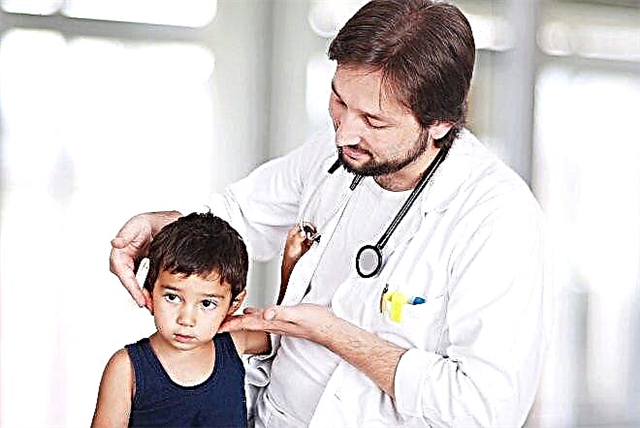
About the pathogen
The virus that causes this unpleasant disease belongs to the genus Rubulaviruses and on this basis it is the closest "relative" to parainfluenza viruses of types 2 and 4 in humans and to several varieties of parainfluenza viruses in monkeys and pigs. It is rather difficult to call a paramyxovirus strong and resistant, since, despite all its cunning, it quickly degrades in the external environment. He dies, like most of his "relatives", when heated, when exposed to sunlight and artificial ultraviolet rays, is afraid of contact with formalin and solvents.
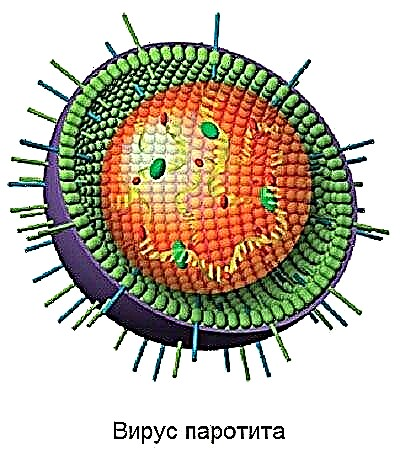
But in the cold, the mumps virus feels great.
It can be stored even in the environment at temperatures up to minus 70 degrees Celsius.
It is this feature that determines the seasonality of the disease - mumps most often get sick in winter. The virus is transmitted by airborne droplets, some medical sources indicate the possibility of infection by contact.
The incubation period from the moment of infection to the onset of the first symptoms lasts from 9-11 to 21-23 days. Most often, two weeks. During this time, the paramyxovirus manages to "settle" on the mucous membranes of the oral cavity, penetrate into the blood, cause the "sticking" of erythrocytes and get to the glands, because the glandular tissue is the favorite and most favorable environment for its replication.
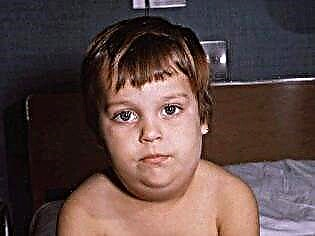

Symptoms
At the initial stage after infection, the disease does not manifest itself in any way, because the virus-causative agent of the disease takes time to penetrate and begin to act inside the child's body. One or two days before the first clear signs of mumps appear, the child may experience a slight discomfort - headache, feeling of unreasonable fatigue, slight muscle pain, chills and problems with appetite.
Once the virus enters the salivary glands, the first symptoms appear within a few hours. First, a high temperature rises and severe intoxication begins. After about a day, the behind-the-ear glands increase in size (symmetrically on one or both sides). This process is accompanied by dry mouth, pain when trying to chew or talk.
Often children, especially small children, not understanding exactly where it hurts, begin to complain about the “sore ear”. The pain really radiates to the ears, so babies are not so far from the truth. In contrast to pain, tinnitus can be quite pronounced. It is associated with external pressure of the edematous glands on the hearing organs.
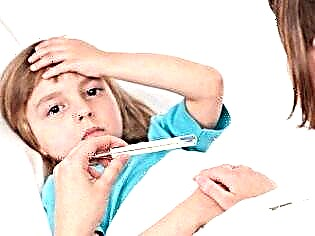
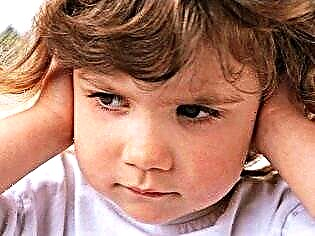
The salivary glands very rarely enlarge at the same time.
Usually, one becomes edematous a few hours earlier than the other. The child's face looks round, unnatural. It is even more rounded if the sublingual and submandibular glands become inflamed after the ear.
The puffiness is loose, softened, loose to the touch. The color of the child's skin does not change. In such a somewhat "bloated" state, the baby can stay for 7-10 days. Then the disease declines.
In 2 weeks after that, the "second wave" may begin, which doctors assess as a complication of mumps. With it, the testicles in boys and the ovaries in girls are similarly affected. Boys most often take the "blow" on the reproductive system. Cases of damage to the gonads in women are the exception rather than the rule.
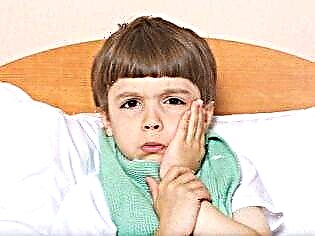
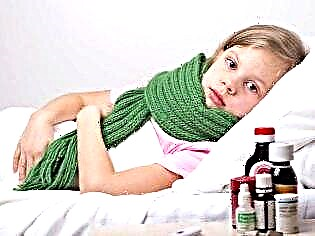
Even less often, the virus manages to reach the prostate gland in boys and the mammary gland in girls. The second onset of mumps, like the first, is accompanied by high fever and worsening of the general condition. The affected testicles increase in size. The defeat of the ovaries cannot be visually determined, but ultrasound diagnostics will come to the rescue in this. Also, the girl may begin to complain of pulling pains in the lower abdomen on the right or left, as well as on both sides at the same time. The condition lasts up to 7-8 days.
On the part of the nervous system during the "second wave", symptoms may also occur, indicating complications of mumps. Serous meningitis occurs most frequently. You can guess that this could happen to a child by raising the temperature to 40.0 degrees and above, as well as by frequent painful vomiting. The child cannot reach the sternum with his chin, almost cannot cope with the simple task of bending and straightening his knees. If, during the return of the illness, the child began to complain of pain in the abdomen, in the back against the background of heat, then be sure it is worth investigating the state of his pancreas - the virus probably infected her too.
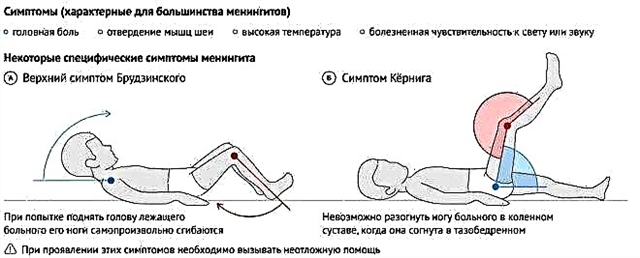
The temperature with parotitis reaches its maximum usually 2 days after the onset of the disease and lasts up to a week.
Soreness of the salivary glands is best defined by me at two points - in front of the earlobe and behind it. These are classic signs of mumps, however, in practice, everything can be quite diverse, because mumps has different degrees, different types and, accordingly, different symptoms.
Classification
Mumps, or, as it is called, viral mumps, in which the glands are affected by a virus, is called specific. It is the most common, almost always with characteristic bright symptoms. Nonspecific parotitis is asymptomatic or with mild symptoms. Sometimes this makes it difficult to diagnose, especially if the course of the first symptoms was nonspecific, the "second wave" of the virus attack in this case is perceived unexpectedly, which is fraught with complications.
Infectious mumps is contagious and is always caused by a virus. Non-infectious danger to others is not. The defeat of the salivary glands with banal parotitis can be caused by trauma to the parotid glands, hypothermia. This mumps is also called non-epidemic.
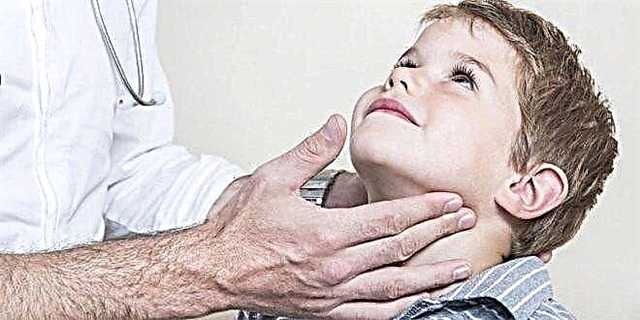
Mumps can occur in three forms:
- mild (symptoms are not expressed or poorly expressed - temperature 37.0-37.7 degrees without obvious intoxication);
- medium (symptoms are moderately expressed - the temperature is up to 39.8 degrees, the glands are greatly enlarged);
- severe (the symptoms are pronounced, the child's condition is severe - temperatures above 40.0 degrees with prolonged presence, severe intoxication, decreased blood pressure, anorexia).
Mumps is usually acute. But in some cases, there is also a chronic ailment, which from time to time makes itself felt by inflammation in the ear salivary glands. Chronic mumps is usually non-infectious. Vulgar (ordinary mumps) occurs against the background of damage to only the salivary glands. Complicated disease is an ailment in which other glands are affected, as well as the child's nervous system.
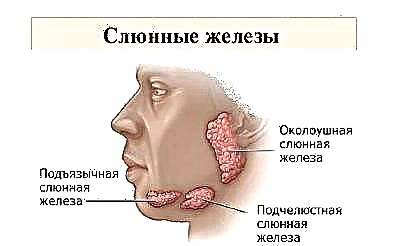
Causes of occurrence
When confronted with paramyxovirus, the disease does not begin in every child. The main reason that affects whether a baby gets sick with mumps or not is his immune status.
If he was not vaccinated against mumps, then the probability of infection increases tenfold.
After vaccination, the baby can also get sick, but in this case, the mumps will be much easier for him, and the likelihood of severe complications will be minimal. In numbers, it looks like this:
- Among children whose parents refused vaccination, the incidence rate at the first contact with paramyxovirus is 97-98%.
- Complications of mumps develop in 60-70% of unvaccinated children. Every third boy after inflammation of the gonads remains infertile. 10% of unvaccinated babies develop deafness as a result of mumps.
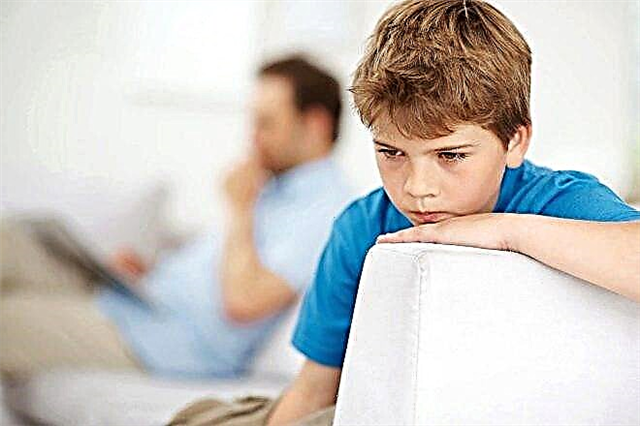
Much depends on the seasonality, because at the end of winter and early spring in children, as a rule, the state of immunity deteriorates, at this time the largest number of identified mumps factor falls. At risk are babies who:
- often suffer from colds and viral infections;
- recently completed a long course of antibiotic treatment;
- have recently been treated with hormonal drugs;
- have chronic medical conditions such as diabetes, for example;
- they are undernourished and malnourished, are deficient in vitamins and minerals.
The epidemic regime plays an important role in infecting a child with mumps. If the baby is attending kindergarten or attending school, then the chances of becoming infected are naturally higher. The main difficulty is that an infected child becomes contagious several days before the first symptoms appear. Neither he nor his parents yet suspect about the disease, and the surrounding children are already actively infected during joint play and study. therefore by the time the first signs appear, several dozen more people may be infected.
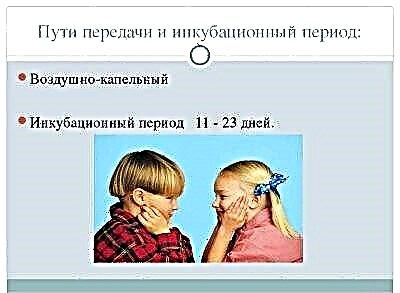
The danger
During the course of the disease, mumps is dangerous with complications such as febrile seizures, which can develop against a background of high fever, as well as dehydration, especially in young children. In the later stages, the danger of mumps lies in the possible damage to other glands of the body.
The most dangerous are the lesions of the gonads and the nervous system.
After orchitis (inflammation of the testicles in boys), which resolves after 7-10 days, complete or partial atrophy of the testicles may pass, which leads to a deterioration in sperm quality and subsequent male infertility. Teenage boys are more likely to develop prostatitis because the virus can also infect the prostate gland. Young children do not develop prostatitis.
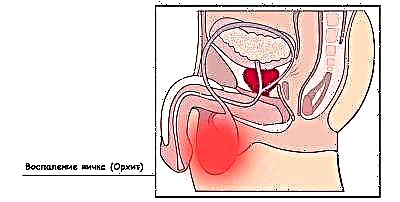
The consequences for girls are much less frequent, since the paramyxovirus does not affect the ovaries so often. The likelihood of developing infertility in boys after suffering from mumps is estimated, according to various sources, at 10-30%. Girls who have had mumps can subsequently have children in 97% of cases. Only 3% of the fair sex, who have suffered inflammation of the gonads, lose their reproductive function.
Dangerous complications of mumps include lesions of the central nervous system - meningitis, meningoencephalitis. Meningitis is three times more likely to develop in boys than in girls. Sometimes lesions of the nervous system end in the fact that some groups of nerves lose their functions, so deafness develops (in 1-5% of cases of mumps), vision loss and blindness (1-3% of cases of mumps). When the pancreas is damaged, diabetes mellitus often develops. The pancreas suffers in about 65% of cases of complicated mumps. Diabetes develops in 2-5% of children.
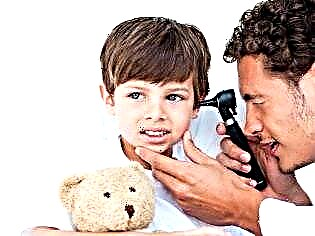
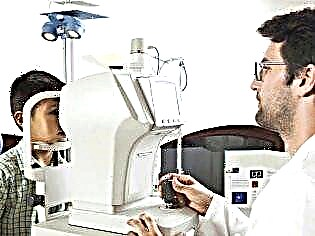
After mumps, joints can become inflamed (arthritis), and this complication occurs in about 3-5% of children, and in girls - much more often than in boys. The prognosis of such arthritis is quite favorable, since the inflammation gradually goes away, 2-3 months after the recovery from mumps.
For more information on how mumps is dangerous, see the next video.
Diagnostics
A typical mumps does not cause difficulties in diagnosis, and the doctor already at the first glance at a small patient knows what he is dealing with. The situation with atypical mumps is much more complicated - when there is no temperature or almost no temperature, when the ear salivary glands are not enlarged. In this case, the doctor will be able to identify mumps only on the basis of laboratory tests.
Moreover, a clinical blood test can tell little about the true reason for the deterioration of the child's well-being.
The most complete picture is provided by the ELISA method, in which antibodies are determined that the child's body produces to the paramyxovirus that has entered the body. They can be found even if the virus has infected only the pancreas or only the sex glands, and there are no obvious symptoms.
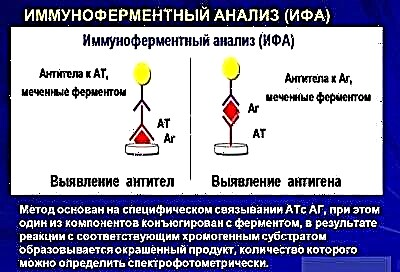
In the acute stage of the disease, IgM antibodies will be found, upon recovery, they will be replaced by other antibodies - IgG, which remain with the child for life, are determined with each analysis and indicate that the child has had mumps and is immune to this disease. It is possible to determine the presence of the virus not only in the blood, but also in swabs from the pharynx, as well as in the secretion of the parotid salivary gland. Virus particles are detected in cerebrospinal fluid and urine.
Since the virus contains a substance that can cause allergies, the child may be subcutaneous allergy test. If paramyxovirus circulates in his body, then the sample will be positive after negative. But if in the very first days from the onset of the disease, the test shows a positive result, then this indicates that the child has already suffered from mumps, and now a secondary disease is occurring.
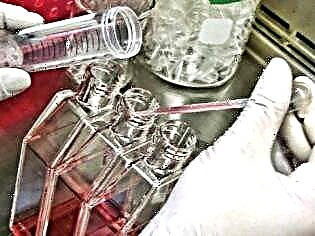
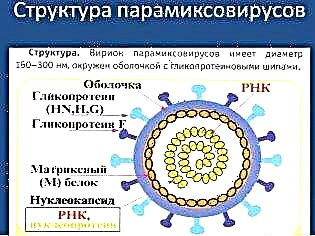
Additional diagnostics is not required, even latent forms of the disease and dubious diagnostic cases are resolved and detected as a result of a blood test or nasopharyngeal washout.For an accurate diagnosis, the doctor will definitely find out which school the child goes to, which kindergarten he is attending, in order to ask the sanitary control authorities if there have been recent outbreaks of mumps in these children's institutions.
If antibodies to the virus in the active stage are found in the child's blood using the ELISA method, then it will be necessary to inform Rospotrebnadzor and the kindergarten or school itself.

Treatment
You can treat mumps at home. True, provided that the child has a mild or moderate form of the disease, only the glands behind the ear are enlarged, and there is also no high fever (above 40.0 degrees) and debilitating intoxication. A child with severe parotitis, signs of central nervous system disorders (meningitis, meningoencephalitis), with enlarged and inflamed sex glands, severe intoxication is hospitalized.
Since a complication such as orchitis (inflammation of the seminal glands) is the greatest danger for older boys, all adolescents from 12 years old are strongly recommended to undergo treatment in a hospital under the supervision of doctors. All other boys definitely need strict bed rest, since compliance with it reduces the likelihood of orchitis by 3-4 times.
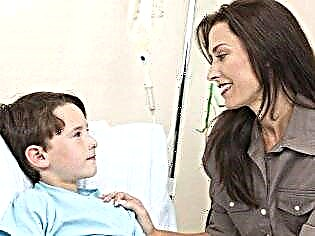

General requirements
Bed rest is indicated for all children, regardless of gender. Special food is added to it. Regardless of whether the pancreas is affected or not, the child should be given warm mashed semi-liquid food, mashed potatoes, and liquid cereals. With severe inflammation and enlargement of the behind-the-ear salivary glands, it is very difficult for the child to chew, and therefore it is not worth giving anything that requires chewing in order to reduce the mechanical stress on the jaw.
Preference is given to steamed and stewed food, fruit purees, fermented milk products. Anything fried, smoked, salted and pickled, as well as juices and raw vegetables are prohibited, fatty foods, baked goods. After eating, rinse the throat and mouth with a weak solution of furacilin.

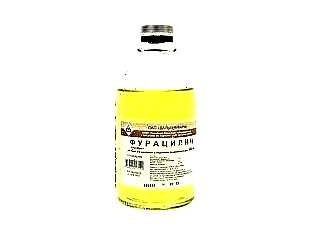
The child should not come into contact with healthy children, as he is contagious throughout the acute period. He will be able to go for walks only after the doctor permits - usually on the 14th day after the onset of the disease. A prerequisite for returning to the usual daily routine and walking is the absence of temperature, intoxication, and the absence of complications.
Inflamed salivary glands can be warmed with dry heat. An electric heating pad, woolen shawl or scarf and preheated salt are suitable for this.
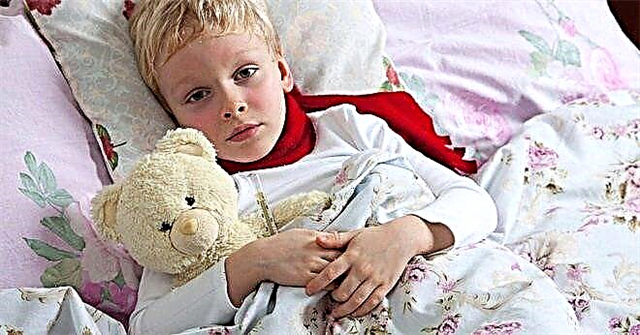
It is strictly forbidden to make alcohol and ointment compresses, bandages, lotions on edematous places. You can not do inhalation with mumps.
Drug treatment
Since mumps is a viral disease, it does not require special medical treatment. Medicines are needed only for symptomatic use. In addition to diet, bed rest and dry heat, antipyretic drugs are prescribed to the affected glands (when the temperature rises above 38.5 degrees). The most preferred products containing paracetamol - Paracetamol, Nurofen, Panadol... The anti-inflammatory non-steroidal drug Ibuprofen helps well.
If the temperature does not respond well to correction, the drugs do not work for long and the fever builds up again, you can combine "Paracetamol" with "Ibuprofen", giving them in turn. First, one medicine, and a few hours later another. It is impossible to give a child from a temperature "Asipirin". Acetylsalicylic acid can cause life-threatening Reye's syndrome in children, in which the liver and brain are affected. To relieve swelling with mumps, antihistamines can be used, of course, with the permission of a doctor. "Suprastin", "Tavegil", "Loratadin" in an age-specific dosage, they will help alleviate the child's condition, since they eliminate the sensitization caused by the virus.

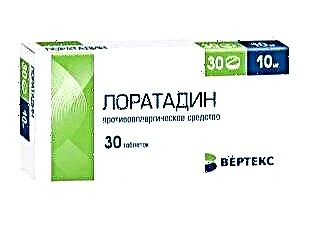
Throughout the treatment, the child will definitely need to provide an abundant drinking regimen. The temperature of the liquid should not be high, it is best that the liquid is absorbed, which in its temperature is equal to the body temperature of the child. Antiviral drugs for the most part have no effect with mumps and do not in any way affect the speed of recovery. The same can be said about popular homeopathic preparations with the declared antiviral effect.
It is a big mistake to give antibiotics to a child with mumps.
Antimicrobial drugs do not affect the virus that caused the disease, but they significantly undermine the immune system and thereby increase the likelihood of complications tenfold.
Antiviral drugs, mainly intravenous, in a hospital setting can only be used to treat children with severe mumps and ongoing complications of the central nervous system - with meningoencephalitis or meningitis. These will be recombinant and leukocyte interferons. Together with them, nootropic drugs can be prescribed ("Pantogam", "Nootropil"). They improve the blood supply to the brain, thereby minimizing the consequences of damage.
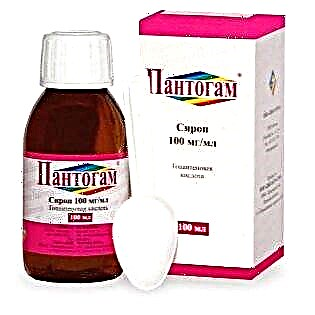
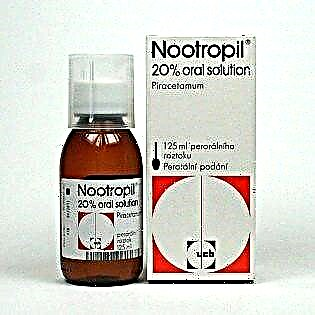
In case of damage to the gonads, children, in addition to antipyretic and antihistamines, can be prescribed intravenous drip of glucose with ascorbic acid and hemodesis, as well as the introduction of glucocorticosteroid hormone "Prednisolone"... Boys have a special bandage on their testicles that keeps the scrotum elevated. Cold lotions (water-based) are applied to the testicles for 2-3 days, and then dry heat (a woolen scarf, for example, or dry cotton wool) will be useful.
With inflammation of the pancreas, a drug is prescribed that relieves spasms of smooth muscles, - "No-shpu", "Papaverine"... To normalize the work of the organ, special enzyme-stimulating drugs allow - "Kontrikal", "Aniprol". It is very difficult to give most of these funds to a child at home, they require intravenous administration along with a glucose solution, and therefore inpatient treatment is recommended for a sick baby with complications in the form of pancreatitis.
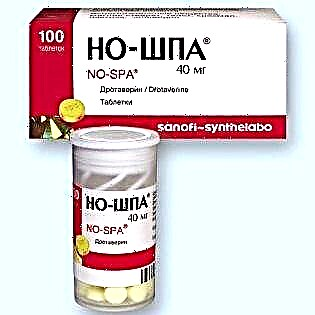
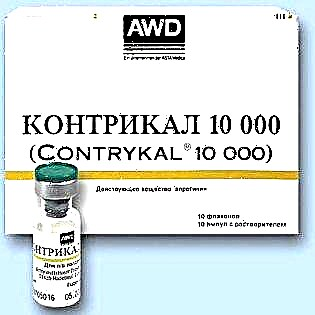
In the first days, you can apply a cold place to the pancreas, after two or three days you can make dry warming compresses.
You should not give your child drugs to normalize the activity of the stomach, as some parents do on their own initiative.
This can only harm the little patient. All children are shown vitamin complexes that are age appropriate and contain not only basic vitamins, but also minerals, since when taking antihistamines, calcium can be lost by the body.
Surgical intervention
Surgeons have to intervene in the treatment of mumps only in exceptional cases. This applies to inflammation of the genital glands in boys and girls, which does not respond to drug treatment. Boys are made an incision in the tunica albuginea of the testicles; girls with severe inflammation of the ovaries can undergo laparoscopic intervention. Usually there is no such need, and these are more desperate measures than the existing medical practice for mumps.
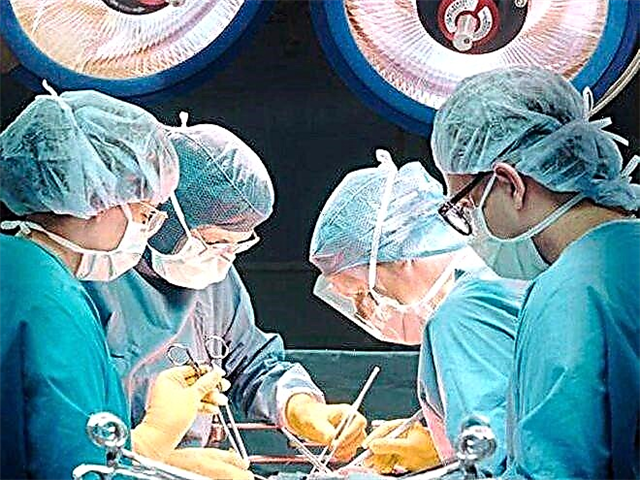
Dispensary observation
All children after mumps should be monitored at the local polyclinic for a month. Children who have suffered complications from the central nervous system have been registered with a neurologist and infectious disease specialist for 2 years. Children after the defeat of the gonads are observed by the urologist and endocrinologist for at least 2-3 years. After inflammation of the pancreas, the child should be observed by a gastroenterologist for at least a year.

Graft
Mumps is not considered a fatal disease, and the mortality rate is extremely low. But complications and long-term consequences of mumps are quite dangerous, so children are vaccinated against mumps. Unfortunately, there are still parents who refuse the vaccination for some personal reasons. It should be noted that today there are no medically justified causes of harm of such vaccination.
The first vaccination against mumps, provided for by the National Calendar of Preventive Vaccinations, is given to a child at 1 year old.
If at this moment the baby is sick, cannot be vaccinated, then the pediatrician can postpone the introduction of the vaccine up to one and a half years. The second vaccination is given to a child at the age of 6, provided that before this age he has not had mumps.
For vaccination, a live vaccine is used, which contains weakened, but real particles of viruses. The vaccine is produced in Russia. Inoculated subcutaneously.

The same drug is administered to a child on an unscheduled basis if he has come into contact with a person with mumps. In this case, it is important to introduce the vaccine no later than 72 hours after contact. If the child was previously vaccinated, then there is no need for the urgent administration of a drug containing live paramyxoviruses. Most often in Russia, children are vaccinated with a three-component drug, Belgian or American, which simultaneously protects them from measles and rubella.
Children with pathologically weakened immunity - with HIV infection, with tuberculosis, with some oncological ailments - receive medical treatment from vaccinations. For each of them, the decision to vaccinate against mumps is made individually, for this they choose a time when the child's condition is more or less stable. Vaccination is contraindicated in children with diseases of the hematopoietic system.
The vaccination will be denied if the child is sick, has a fever, teething, digestive disorders, diarrhea or constipation. This is a temporary ban that will be lifted immediately after the child gets better.
A temporary taboo on mumps vaccination is also imposed after the child has undergone a course of treatment with hormonal drugs.
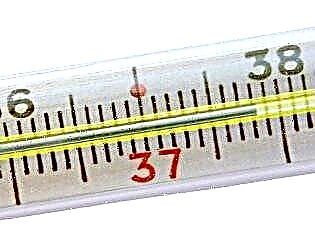
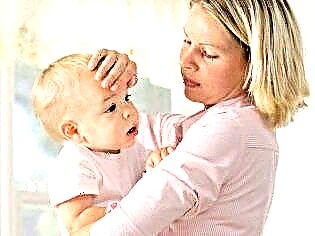
With care, the doctor will give permission to vaccinate a baby with an allergy to chicken protein. Most mumps vaccines are made on its basis, infecting chicken embryos with the virus. Many parents mistakenly believe that such an allergy in a child is the basis for a decisive medical withdrawal. This is not true. The vaccine is approved even for allergy sufferers, just for their condition, the doctor after vaccination for an hour or two, the doctor will observe especially carefully, so that in case of an allergic reaction, antihistamines are quickly administered to the baby.
Children under one year old are not given the vaccine even during a massive epidemic of mumps.
In this case, the risk of getting infected is lower than the risk of getting severe complications from the drug administration. The vaccine is not officially considered reactogenic, but in practice, doctors note that after it, malaise, fever, redness of the throat are possible. Some children do not begin to feel unwell until a week after vaccination. In this case, the child must be shown to the pediatrician.
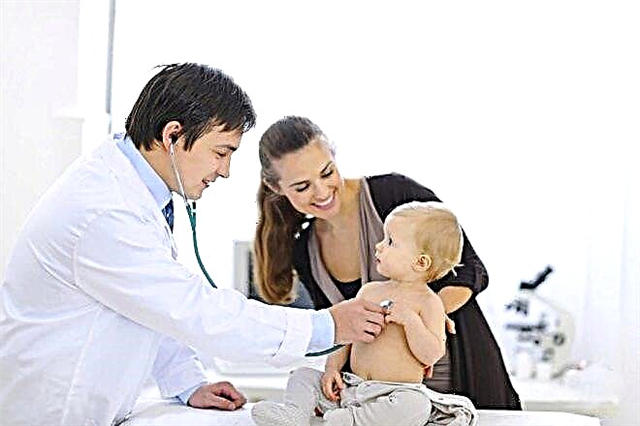
A vaccinated child can get mumps. But this probability is much lower than if the child had not been vaccinated. Illness in the case of illness after vaccination usually proceeds in a mild form without complications, and sometimes even without characteristic symptoms. It happens that a person accidentally finds out that he has antibodies in his blood, that he once had mumps.
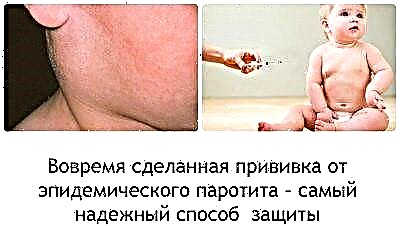
Prevention
Epidemic mumps is a disease that cannot be protected from only by observing the rules of hygiene and eating right. The most reliable specific prophylaxis is vaccination. Everything else is the correct quarantine measures that are taken in case of illness of someone from the environment of the baby.
The patient is isolated for 10-12 days. During this time, a kindergarten or school is quarantined for 21 days. Premises, dishes, toys are treated with special care, because paramyxoviruses die on contact with disinfectants.

All children who have not previously been vaccinated against mumps, as well as children who have not been vaccinated until the end (one out of two vaccinations was made), are urgently vaccinated if no more than three days have passed since contact with a sick peer. On their own, parents for prevention can do everything to strengthen the child's immunity. This is the right way of life, hardening, full and balanced nutrition, physical activity for the baby.
